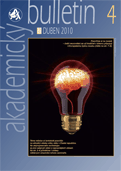Academy of Sciences of the Czech republic › About AS CR › AS CR Structure › Research institutes › neziva
Institute of Physics of the ASCR, v. v. i.
182 21 Praha 8
The Institute was formed in 1954 from the Laboratory of Nuclear Physics and the Laboratory of Experimental and Theoretical Physics of the Czechoslovak Academy of Sciences, which were founded in 1952. In 1979, it merged with the Academy’s Laboratory of Low Temperature Physics and the Institute of Solid State Physics. The latter had been established before World War II as the Škoda Works Research Labs. Pursuant to Act No. 341/2005 Coll., the Institute became a public research institution as of 1 January 2007.
The present research programme of the Institute includes particle physics, the physics of condensed matter, plasma physics and optics. The research in particle physics includes mathematical physics, astroparticle physics, the properties of nucleons and fundamental particles (involving international projects within the framework of CERN and DESY), and particle detectors. The research in condensed matter physics chiefly focuses on the dynamic and cooperative phenomena in disordered and inhomogeneous materials. The objects of interest are nanostructured semiconductors, superconductors, liquid crystals, liquid helium, superlattices, grain and domain boundaries, and phase interfaces. Phenomena like defects and irregularities in space alignment are investigated in systems with significant dielectric, magnetic, superconducting, superfluid, optical, transport and mechanical properties. Research is also oriented toward growth of thin films and nanostructures, mainly of silicon, diamond and diluted ferromagnetic semiconductors. New plasma and hybrid technologies are used for the preparation of advanced optical materials for optoelectronics. In the field of quantum optics various types of sources of quantum-correlated photon pairs are developed as well as devices for cloning and transfer of information stored in photon properties. The research in the field of laser-produced plasma is directed to the dynamics and radiation properties of the dense hot matter created by the terawatt iodine laser system PALS. Fast ions and intense x-ray radiation are used to study the interaction of a focused laser beam with solid and gaseous targets.






